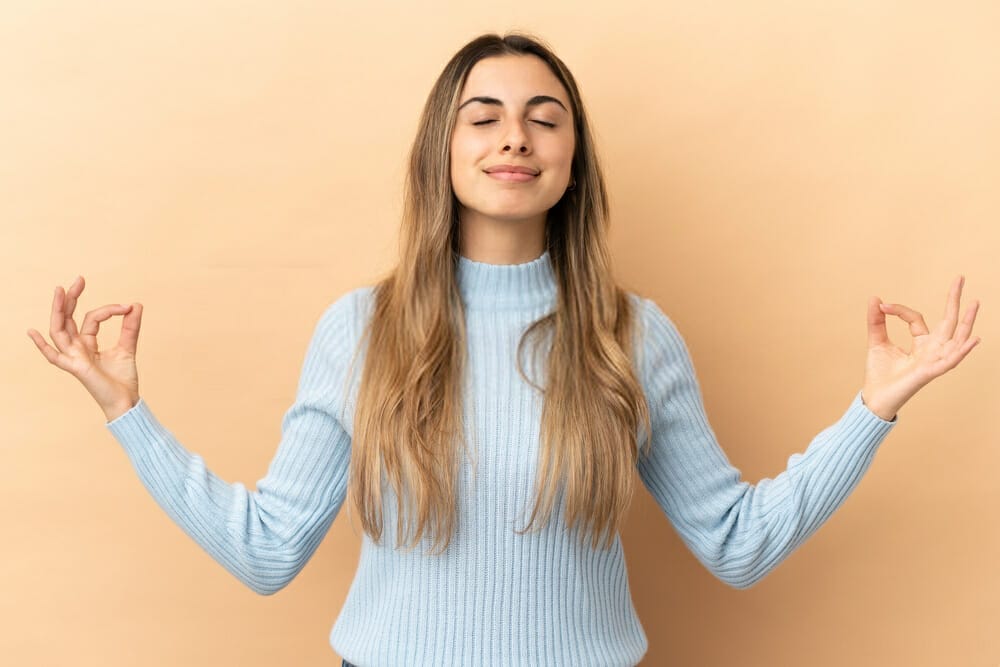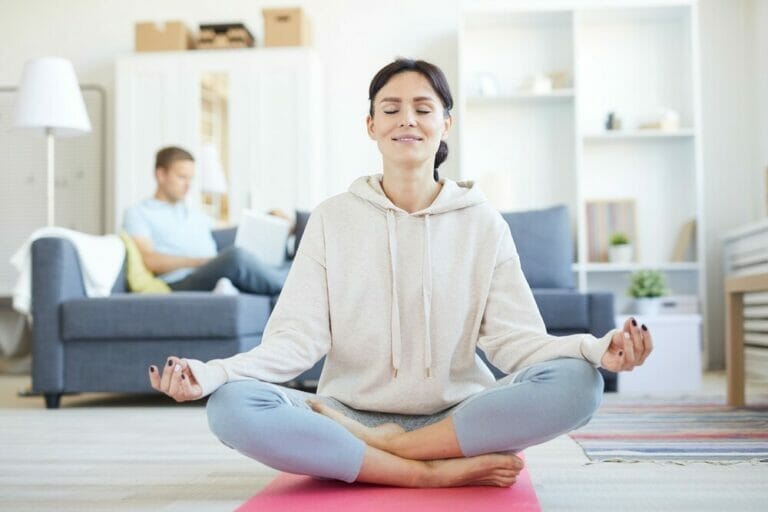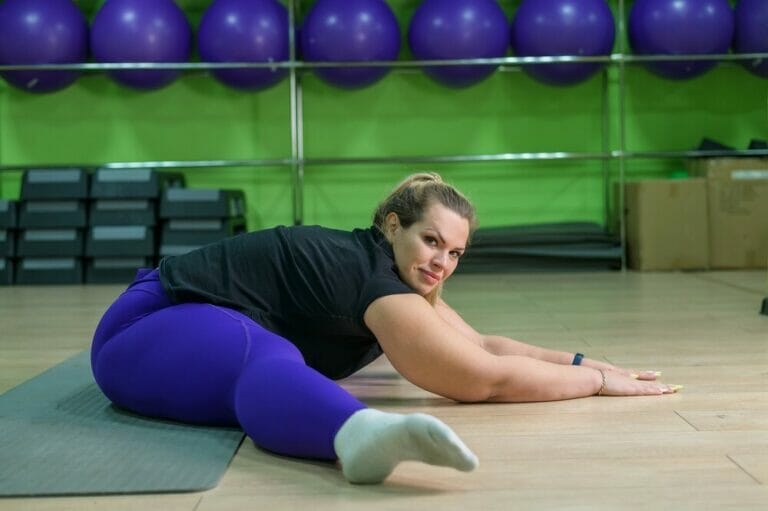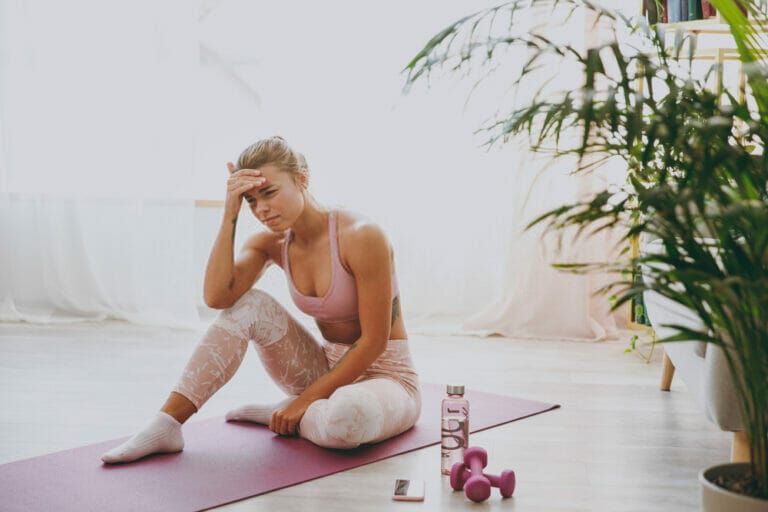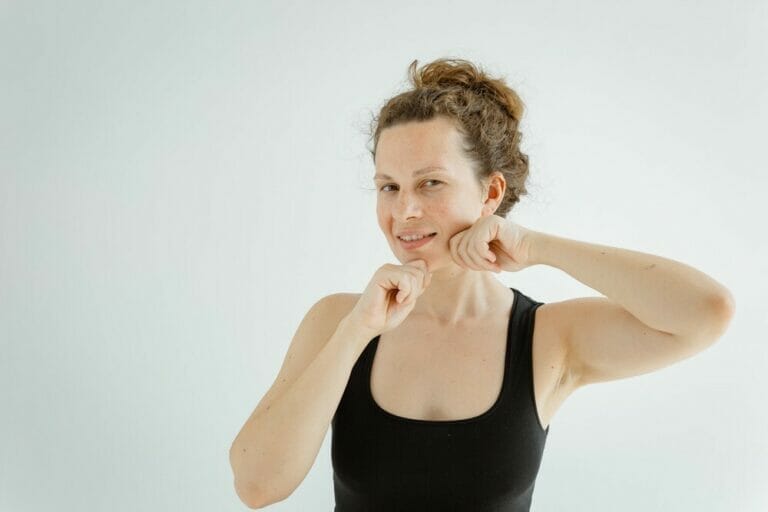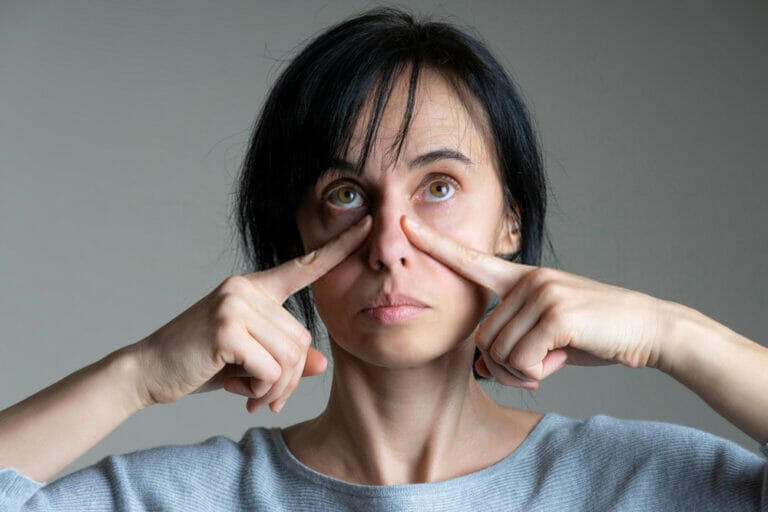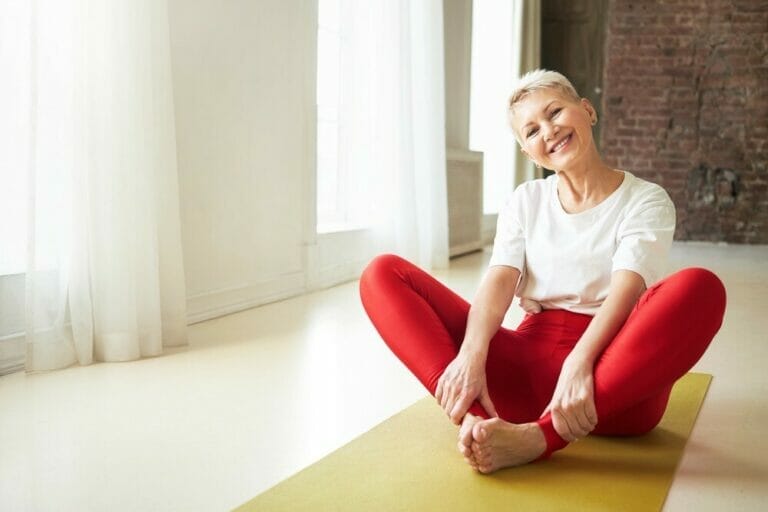Yoga Poses You Should Do To Cool Down
If you’ve just finished an intense training session or exercise of any kind, it can be hard to cool down. You’re quite literally a bundle of nervous energy!
The best way to cool down your body after a workout is through yoga poses. Yoga is a natural path to help relieve fatigue, reduce stress, increase blood flow, and maintain an overall sense of well-being.
When the body is overstressed, it’s usually because some muscles have been working too hard without a break.
So as you cool down, you need to gradually bring your heart rate and breathe under control so that your muscles can de-activate and return to their normal state.
You’ll find that a cool-down period of one to five minutes is included in almost all exercise programs.
This article will learn about yoga Poses for Cool-Down and how different yoga Poses are helpful.
Yoga Poses for Cool-Down
Child’s Pose
The Child’s Pose is a resting position used in yoga to relieve fatigue and stress. It lengthens the spine and relaxes the back muscles. Child pose is also one of the best yoga poses for period cramps.
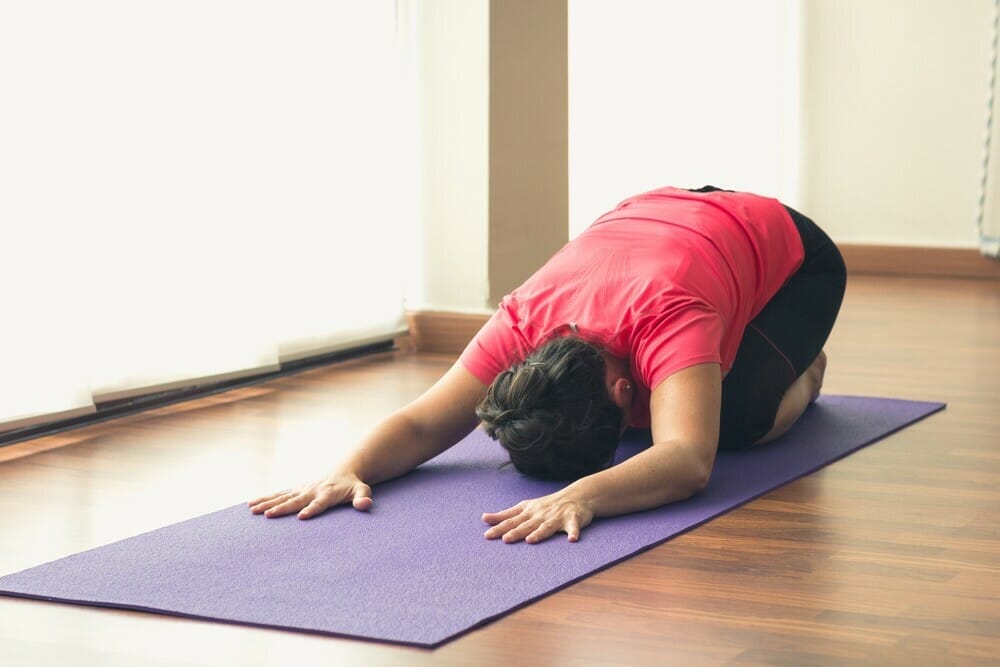
It is very effective in allowing you to breathe deeply and calm the mind. It is also used to prepare for deeper standing poses.
Pigeon’s Pose
The Pigeon’s Pose is a deep hip stretch. It strengthens the thigh muscles, improves hip mobility, and improves flexibility, balance, endurance, and stamina.
In addition, this pose can be very relaxing in that it relieves tension in the hips, thighs, knees, and ankles.
Happy Baby Pose
The Happy Baby Pose is a good pose for increasing blood flow and vitality. This pose increases the blood flow to the head and neck, especially in the brain and cerebellum areas of the brain.
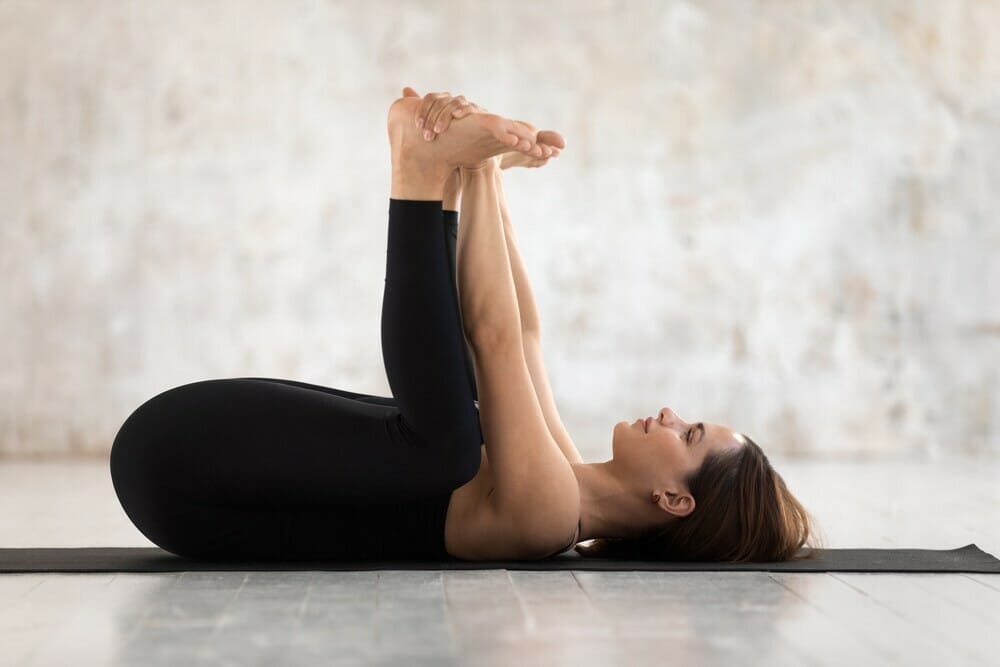
It also improves focus and concentration, bringing freshness to your mind.
Easy Pose
The easy pose stretches out the legs while relieving tension in the lower back, hips, thighs, and feet. It also improves leg, hip, back, and abdominal muscle flexibility.
Fish Pose
Fish Pose is a deep hip stretch that’s great for the thighs and hips. This pose stimulates the nervous system, easing tension in the body and mind.
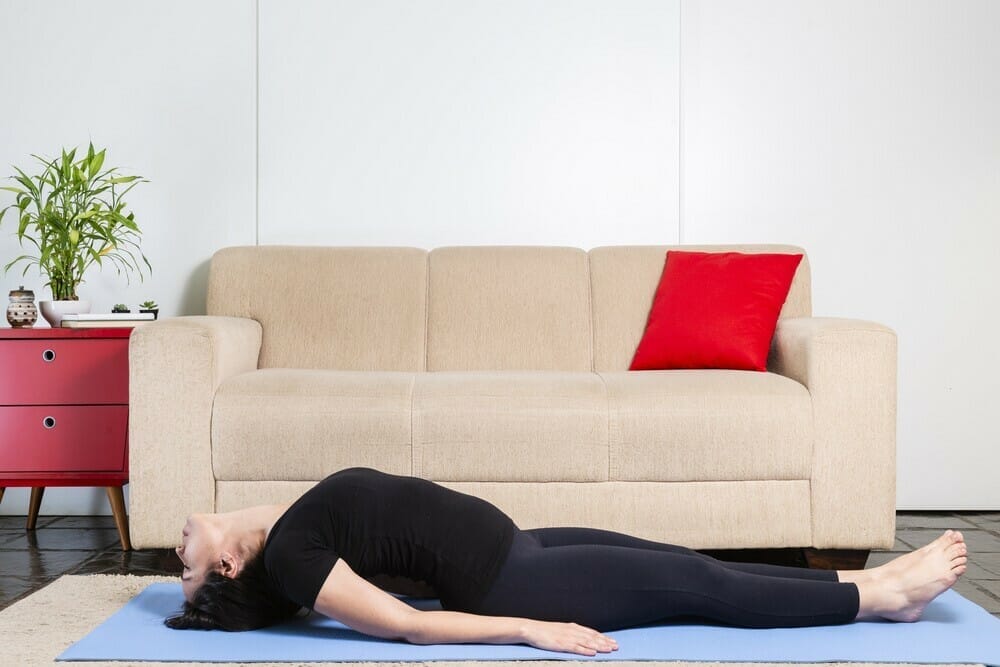
It also improves blood circulation to your brain and relieves pain in the lower back.
Supine Spinal Twist
The Supine Spinal Twist is a deep hip and trunk stretch. This pose relieves tension in the lower back, hips, thighs, and legs.
It also improves suppleness and flexibility of the spine, hips, legs, and ankles.
Corpse Pose
The Corpse Pose is a resting pose held for a long time to relax the body and mind completely. This pose induces deep sleep and helps to purify the Nadis (channels of energy in your body).
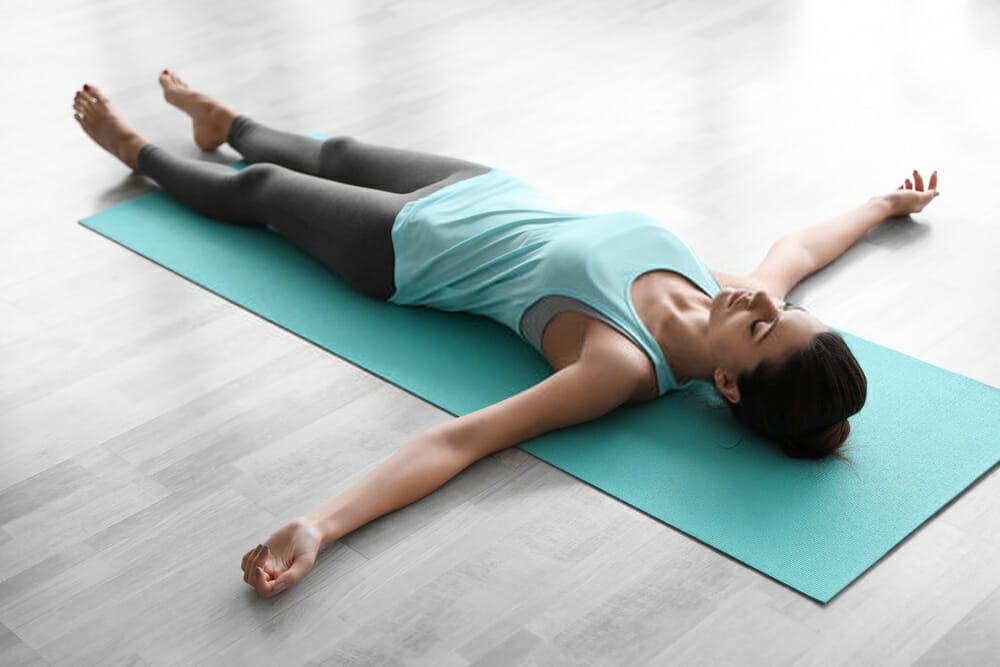
It promotes calmness, relieves stress, puts you in touch with your subtle feelings, and restores balance within yourself.
Legs Up The Wall Pose
It is one of our favourite post-workout poses. Legs Up The Wall Pose is an excellent pose for loosening tightness and tension in the hips, legs, and ankles.
It can also relieve stress and improve your blood flow to the liver and other organs. This pose is also used to check the health of your knees.
Goddess pose
The Goddess Pose is a deep hip stretch that relieves groin tightness and sciatica. It also reduces lower back pain, relieves stress, and improves blood circulation. This pose looks excellent on you!
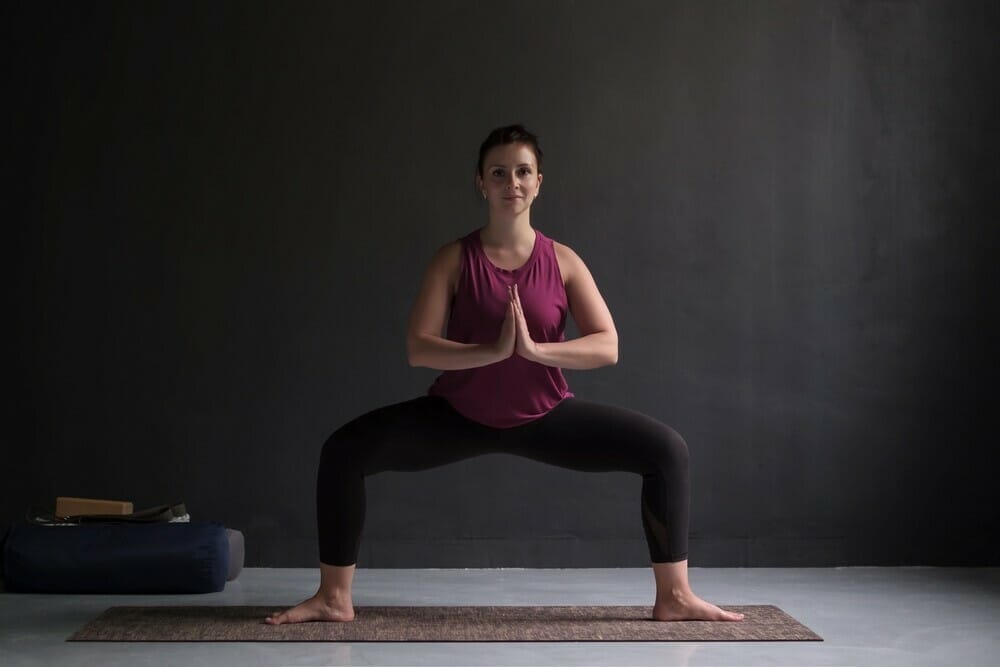
Downward Facing Dog Pose
The Downward Facing Dog Pose is one of the most beneficial yoga poses for increasing body awareness, relieving fatigue, and improving your sense of well-being.
This pose increases your flexibility in the spine and improves your balance and coordination. It also calms the mind and keeps you in touch with your subtle feelings.
Thread-The-Needle Pose
The THREAD-THE-NEEDLE pose is a shoulder stretch that increases your shoulder flexibility and improves your posture. This pose also provides relief from shoulder tension and neck fatigue.
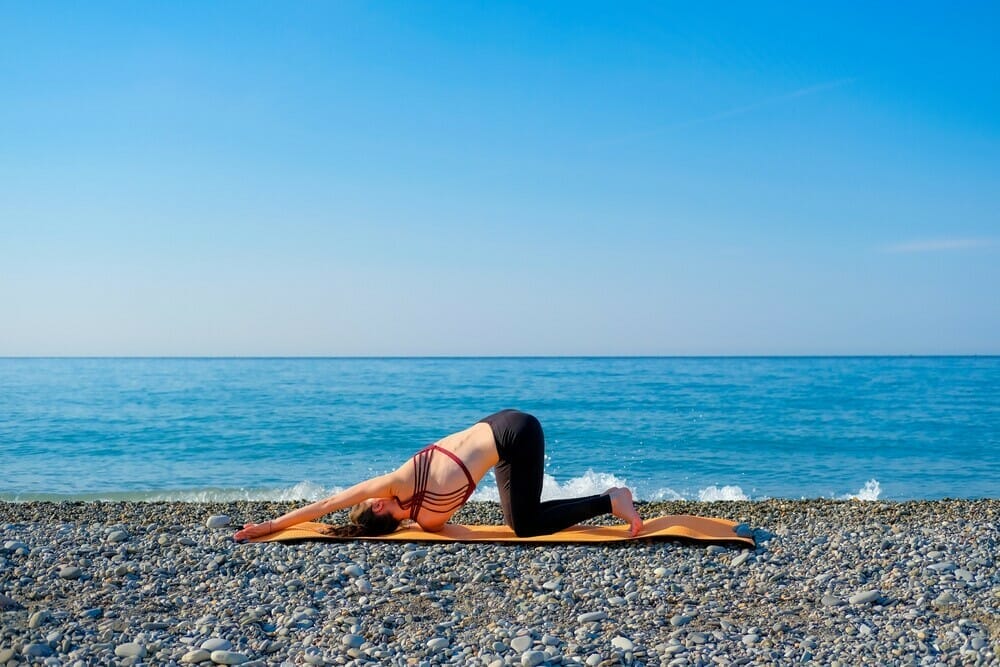
Screaming Toe
Screaming Toe is the best yoga cool-down pose for your feet. It improves blood circulation and relieves soreness in your feet and ankles. It also increases body awareness and increases energy in the body.
Standing Forward Fold
The Standing Forward Fold offers a simple yet effective way of cooling down your body. This pose is highly beneficial for relieving stress from the body, increasing energy, and improving overall strength, flexibility, health, and well-being.
Half Split Stretch
The Half Split Stretch is an excellent stretch for the back and the legs. It increases flexibility in the hips, shoulders, and upper back.

This pose is one of the most beneficial post-workout poses as it helps you recover faster and can also calm your mind.
Camel Pose
Camel Pose stretches out your spine, improves spinal flexibility, relaxes muscles in your lower back and hips, relieves tension in your legs, and reduces pain in your feet.
It also improves blood flow to the abdominal organs, helps to detoxify your body, and reduces pressure in the lower back. It also gives you a gorgeous shape!
Cobra Pose
Cobra Pose is one of the most beneficial poses for increasing the energy flow to your brain. This pose also increases the body’s ability to absorb nutrients and improves concentration and memory.
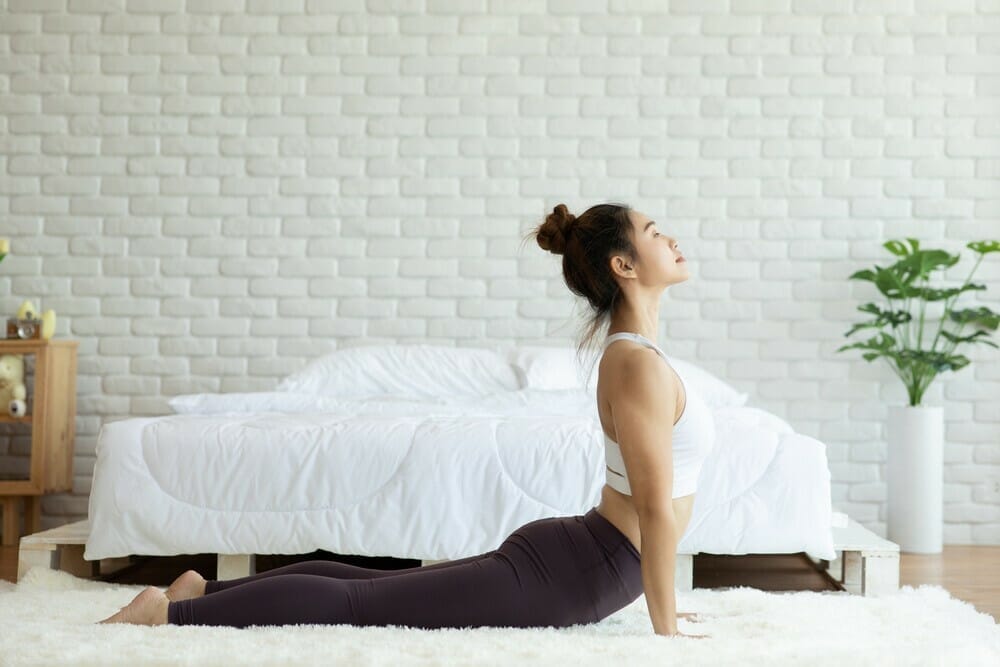
In addition, this pose stretches out the back and improves spinal flexibility, relieves a sore lower back, and reduces fatigue.
Conclusion
Yoga Poses for Cool-Down are also called restorative Yoga Poses. Yoga cool-down poses are essential because they help you recover faster from your workouts besides improving flexibility, strength, and balance.
In the end, I hope that these 16 Yoga Poses for Cool-Down will be beneficial for you and get you started. If you have any suggestions or questions, please leave them in the comment section.

